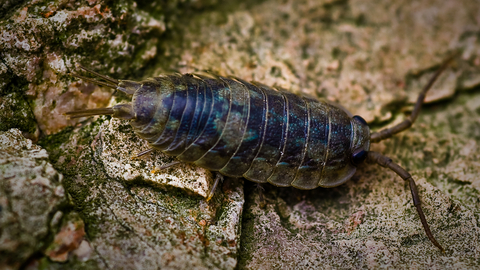
Sea Slater ©Mark Robinson
Sea slater
Scientific name: Ligia oceanica
These little critters are related to the woodlice you find in your garden and play a very important role on rocky shores.
Top facts
Category
Stats
Length: up to 3cm Average Lifespan: 2.5 yearsConservation status
Common
When to see
January to DecemberAbout
The sea slater is a type of crustacean, closely related to the woodlouse. Also known as the sea roach, they live on rocky shores all around the UK. They hide away in crevices and under rocks during the day and come out at night to feed.Like the terrestrial woodlouse, they play an important role in the ecosystem. They are detritivores and munch on decaying material like seaweed; this helps break it down and increase the surface area for decomposition by bacteria and fungi. The best time to look for sea slaters is late in the evening or at night, when they leave their hidey-holes in search of food.
